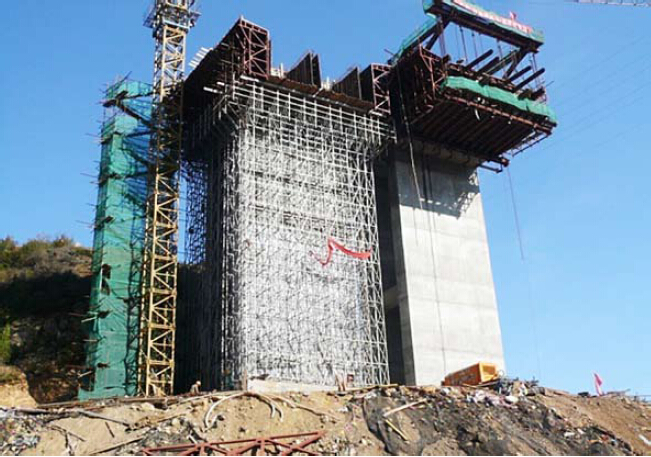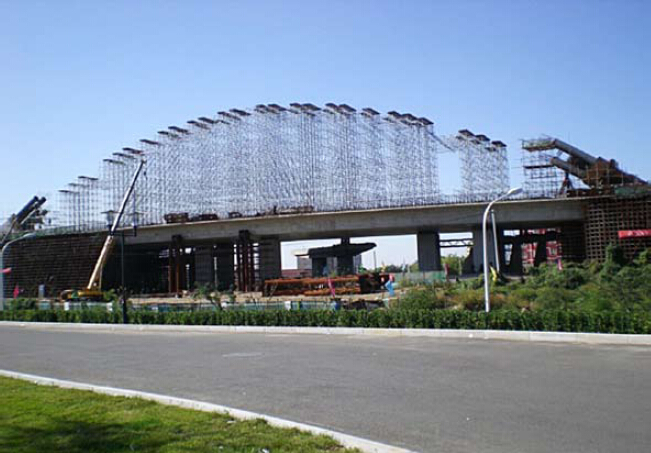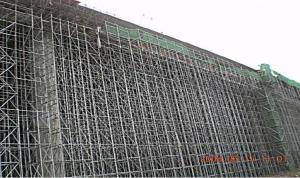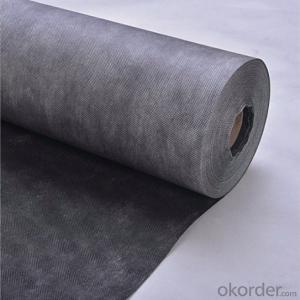Tower-scaffolding for formwork and scaffolding systems
- Loading Port:
- Tianjin
- Payment Terms:
- TT OR LC
- Min Order Qty:
- 50 m²
- Supply Capability:
- 1000 m²/month
OKorder Service Pledge
Quality Product, Order Online Tracking, Timely Delivery
OKorder Financial Service
Credit Rating, Credit Services, Credit Purchasing
You Might Also Like
Tower Scaffolding
Shoring tower is an effective supporting system. It is easy to assemble and dismantlement, and
has excellent stability and bearing capacity. It has been widely used in the construction of industry
& residential buildings , bridges, tunnels and dam project, etc.
Characteristics:
◆ High degree of standardization.
◆ Easy storage and transportation


- Q:What are the common finishes available for steel formwork?
- There are several common finishes available for steel formwork, depending on the specific requirements of the project. Some of the most common finishes include: 1. Smooth finish: This is the most basic and commonly used finish for steel formwork. It provides a smooth surface that is suitable for most applications. 2. Textured finish: A textured finish can be achieved by using special form liners or by applying a textured coating to the steel formwork. This finish can add visual interest and provide a non-slip surface. 3. Galvanized finish: Galvanizing is a process of applying a protective zinc coating to the steel formwork. This finish provides excellent corrosion resistance, making it suitable for projects in harsh environments. 4. Powder-coated finish: Powder coating involves applying a dry powder to the steel formwork and then curing it with heat to form a protective layer. This finish offers durability, resistance to chipping and scratching, and a wide range of color options. 5. Painted finish: Steel formwork can also be painted to achieve the desired aesthetic appearance. Paint provides protection against corrosion and can be customized to match the project's design requirements. It is important to consider the specific project requirements, including the expected lifespan, environmental conditions, and aesthetic preferences, when selecting the appropriate finish for steel formwork. Additionally, it is recommended to consult with a structural engineer or a construction professional to determine the most suitable finish for a particular project.
- Q:Can steel formwork be used for both interior and exterior concrete structures?
- Yes, steel formwork can be used for both interior and exterior concrete structures. Steel is a versatile material that offers exceptional strength and durability, making it suitable for various construction applications. When used as formwork, steel provides a rigid and stable framework that can withstand the pressure exerted by fresh concrete during pouring and curing. This makes it ideal for creating both interior and exterior concrete structures. Steel formwork is commonly used for constructing walls, columns, beams, slabs, and other structural elements in buildings and infrastructure projects. Its robustness allows it to withstand harsh weather conditions and other environmental factors, making it suitable for exterior structures. Additionally, steel formwork can be easily reused multiple times, which makes it a cost-effective choice for both interior and exterior projects. Furthermore, steel formwork offers flexibility in design and can be easily customized to meet specific project requirements. It can be easily assembled and disassembled, allowing for efficient construction processes. The smooth surface of steel formwork also produces high-quality finishes on concrete structures. However, it is important to note that steel formwork requires proper maintenance to ensure its longevity and prevent corrosion. Regular inspections, cleaning, and the application of protective coatings are necessary to maintain the integrity of the formwork. In conclusion, steel formwork is a versatile and reliable choice for both interior and exterior concrete structures. Its strength, durability, and flexibility make it suitable for a wide range of construction projects, providing efficient and high-quality results.
- Q:How long does it take to set up steel formwork?
- The time it takes to set up steel formwork depends on various factors such as the complexity of the structure, the experience and skill level of the workers, the size of the project, and the availability of equipment. Generally, setting up steel formwork can take anywhere from a few hours to several days. For smaller projects with simple structures, a team of experienced workers can typically set up the formwork within a day or two. This includes measuring and marking the layout, assembling the steel panels, beams, and props, and securing them in place. The process may also involve attaching braces and ties to ensure stability and alignment. On the other hand, larger and more complex projects may require more time for formwork setup. This could involve intricate designs, multiple levels or floors, and a higher number of formwork components. In such cases, the setup process may take several days or even weeks, depending on the size of the team and the availability of resources. It's important to note that while steel formwork may take longer to set up compared to other types of formwork such as timber or plastic, it offers benefits such as durability, reusability, and better stability. These advantages outweigh the additional time required for setup, especially for large-scale construction projects that require strong and reliable formwork systems.
- Q:How does steel formwork affect the overall aesthetics of a structure?
- Steel formwork does not have a direct impact on the overall aesthetics of a structure as it is a temporary structure used for shaping and supporting concrete during construction. However, steel formwork can indirectly affect aesthetics by allowing for precise and smooth finishes, resulting in a more visually appealing final product. Additionally, steel formwork's strength and durability ensure structural integrity, which is essential for maintaining the long-term aesthetics of the structure.
- Q:How does steel formwork affect the concrete finish?
- Steel formwork can have a significant impact on the concrete finish. Firstly, steel formwork provides a smoother and more uniform surface compared to other types of formwork materials such as wood or plastic. This can result in a smoother and more aesthetically pleasing concrete finish. Additionally, steel formwork provides a higher level of dimensional accuracy and stability during the concrete pouring and curing process. This means that the concrete is less likely to shrink or warp, resulting in a more precise and even finish. Furthermore, steel formwork allows for tighter joints and fewer seams, which can minimize the occurrence of surface imperfections such as cracks or air pockets. This is particularly important for achieving a high-quality finish in architectural or decorative concrete applications. Moreover, steel formwork provides better resistance to moisture and chemicals, reducing the risk of staining or discoloration on the concrete surface. It also offers a higher level of durability, ensuring that the formwork remains intact throughout the entire concrete pouring process, resulting in a smoother and more consistent finish. In summary, the use of steel formwork positively affects the concrete finish by providing a smoother surface, better dimensional accuracy, fewer surface imperfections, improved resistance to moisture and chemicals, and enhanced durability.
- Q:How does steel formwork affect the schedule of concrete pouring?
- Steel formwork can positively affect the schedule of concrete pouring by allowing for faster assembly and disassembly compared to traditional wooden formwork. This speed and efficiency help to accelerate the construction process, ultimately reducing the overall time required for concrete pouring activities. Additionally, steel formwork provides better dimensional accuracy and stability, enabling smoother and quicker concrete placement, which further contributes to meeting project deadlines.
- Q:Can steel formwork be used in coastal or marine construction projects?
- Yes, steel formwork can be used in coastal or marine construction projects. Steel is a durable and corrosion-resistant material that can withstand the harsh conditions of coastal environments. It provides a strong and stable framework for concrete structures, making it suitable for various applications such as retaining walls, piers, and jetties. Additionally, steel formwork is reusable, making it a cost-effective choice for these types of projects.
- Q:How does steel formwork handle different concrete surface sealing products?
- Steel formwork is a widely used material in the construction industry for creating molds or structures to pour concrete into. When it comes to dealing with different sealing products for concrete surfaces, steel formwork offers certain advantages and considerations. First and foremost, steel formwork is exceptionally durable and strong, making it ideal for withstanding the application of various sealing products for concrete surfaces. These sealing products, like epoxy coatings, polyurethane sealers, or acrylic sealants, are typically designed to improve the durability, appearance, and resistance of the concrete surface. Steel formwork can handle the application process without sustaining any damage or compromise. Additionally, steel formwork provides a smooth and uniform surface for applying sealing products to concrete surfaces. This is crucial because a proper seal requires an even and consistent application to ensure optimal performance. With proper construction and maintenance, steel formwork can provide the necessary precision and flatness required for successful sealing product application. However, it is important to note that using specific sealing products for concrete surfaces may necessitate additional preparation and precautions when utilizing steel formwork. For example, if a sealing product requires a clean and porous surface to adhere properly, the steel formwork may need treatment or roughening to create the desired surface texture. Techniques like sandblasting or the application of a bonding agent can achieve this. Furthermore, before applying sealing products to concrete surfaces, it is crucial to ensure that the steel formwork is thoroughly cleaned and free from any residues or contaminants. Any remaining concrete, oils, or dirt on the formwork may interfere with the adhesion and performance of the sealing products. Regular maintenance and cleaning of the steel formwork are essential to guarantee its compatibility with various sealing products for concrete surfaces. In conclusion, steel formwork is a dependable and robust material that can handle different sealing products for concrete surfaces. Its durability, precision, and smooth surface make it a suitable choice for applying various sealing products. However, optimal compatibility and performance may require additional preparation, maintenance, and cleaning.
- Q:What are the different types of formwork corner solutions used in steel formwork?
- There are several different types of formwork corner solutions used in steel formwork, including internal corners, external corners, chamfered corners, and rounded corners. Internal corners are used to create seamless and smooth transitions between walls or columns, while external corners are used to create sharp and precise edges. Chamfered corners are used to create angled or beveled edges, providing a more decorative finish to the concrete structure. Finally, rounded corners are used to create curved or rounded edges, adding a softer and more aesthetically pleasing look to the finished formwork.
- Q:What is the maintenance required for steel formwork?
- To maintain steel formwork, cleaning and storage are of utmost importance. After each use, it is crucial to thoroughly clean the formwork to eliminate any concrete residue or debris. This can be accomplished by employing water and a brush or pressure washer. Additionally, any signs of rust should be addressed with a rust converter and a coat of paint to prevent further deterioration. Proper storage plays a vital role in maintaining steel formwork. It should be kept in a dry and well-ventilated area to prevent the accumulation of moisture and subsequent rusting. If feasible, storing the formwork above ground level will minimize contact with moisture. To ensure the formwork remains in optimal working condition, regular inspections should be conducted to detect any damages or signs of wear and tear. Any bent or damaged components should be promptly repaired or replaced. In summary, maintaining steel formwork entails regular cleaning, appropriate storage, and thorough inspections to guarantee its longevity and effectiveness in construction projects.
1. Manufacturer Overview |
|
|---|---|
| Location | |
| Year Established | |
| Annual Output Value | |
| Main Markets | |
| Company Certifications | |
2. Manufacturer Certificates |
|
|---|---|
| a) Certification Name | |
| Range | |
| Reference | |
| Validity Period | |
3. Manufacturer Capability |
|
|---|---|
| a)Trade Capacity | |
| Nearest Port | |
| Export Percentage | |
| No.of Employees in Trade Department | |
| Language Spoken: | |
| b)Factory Information | |
| Factory Size: | |
| No. of Production Lines | |
| Contract Manufacturing | |
| Product Price Range | |
Send your message to us
Tower-scaffolding for formwork and scaffolding systems
- Loading Port:
- Tianjin
- Payment Terms:
- TT OR LC
- Min Order Qty:
- 50 m²
- Supply Capability:
- 1000 m²/month
OKorder Service Pledge
Quality Product, Order Online Tracking, Timely Delivery
OKorder Financial Service
Credit Rating, Credit Services, Credit Purchasing
Similar products
New products
Hot products
Hot Searches
Related keywords























